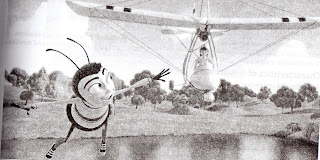Multimedia is the combination or integration of text, sound, motion video, animation. Multimedia has entered the mainstream because of its capability to attract people and to hold their attention.
The word 'multimedia' simply means being able to communicate in more than one way. All of us give multimedia presentation without being aware of it. So, multimedia is all about communicating in several ways. Our computer is capable of flashing text and beeping when there is a problem. It is already a multimedia computer, anything else is a matter of degree.
The word 'multimedia' simply means being able to communicate in more than one way. All of us give multimedia presentation without being aware of it. So, multimedia is all about communicating in several ways. Our computer is capable of flashing text and beeping when there is a problem. It is already a multimedia computer, anything else is a matter of degree.
Multimedia is the field concerned with the computer controlled integration of text, graphics, drawing, still and moving images, animation, video, audio, and any other media, where every type of information can be represented, stored, transmitted and processed digitally. A multimedia application is an application, which uses a collection of multiple media source eg. text, graphics, imaged, sound, animations, videos.
A multimedia system capable of processing multimedia data and applications. A multimedia system is characterized by the processing, storage, generation, manipulation and rendition of multimedia information.
Characteristics of Multimedia System:
- multimedia system must be computer controlled.
- multimedia system are integrated.
- the information they handle must be represented digitally.
- the interface to the final presentation of media is usually interactive.
Features Of Multimedia System:
- Very high processing power: Needed to deal with large data processing and real time delivery of media. special hardware commonplace.
- Multimedia capable file system:- Need to deliver real time media. i.e streaming of video, audio, sounds, animations etc.
- Data representations/ file formats that support multimedia:- Data representation/ file formats should be easy to handle yet allow for compression/ decompression in real time.
- Efficient and high I/O:- Input and output to the file subsystem needs to be efficient and fast. Needs to allow for real time recording as well as playback of data.
- Special Operating system: - To allow access to file system and process data efficiently and quickly. Needs to support direct transfer to disk, real-time scheduling, fast interrupt processing, I/O streaming etc.
- Storage and Memory: - Large storage units and large memory. Large caches also required and frequently of level 2 and 3 hierarchy for efficient management.
- Network support:- Client-server systems as common as distributed systems.
- Software tools: - User friendly tools needed to handle media, design and develop applications, deliver media.
Components of multimedia:
- Capture device:- video camera, video recorder, audio microphone, keyboard, mouse, graphics tablet, 3D input devices, tactile sensors, VR devices, digitizing/sampling hardware.
- Storage device: - Hard disk, CDs, DVDs, Jaz/Zip drives, etc
- Communication networks: - Ethernet, token ring, fiber distributed data interface (FDDI), asynchronous transfer mode (ATM), intranets, internet.
- Computer system: - Multimedia desktop machines, workstations, MPEG/video hardware.
- Display devices: - CD- quality speakers, high definition TV, SVGA, high-resolution monitors, color printers etc.
Applications:
Examples of multimedia applications include world wide web, hypermedia, video conferencing, video demand, interactive TV, groupware, home shopping, games, virtual reality, digital video editing and production systems, multimedia database systems, teaching, learning etc.
Multimedia Elements:
- Text: Text has the most impact on the quality of the multimedia title. Text provides important information. Text acts as the keystone tying all the other media elements together. It is well written text that makes a production wonderful.
- Graphics:- Graphics provides the most creative possibilities for a title. In multimedia the selection of the graphic is crucial. The graphic should complement the text on the page. Graphics are usually constructed by the composition of primitive objects such as lines, polygons, circles, curves and arcs. Graphics are usually generated by a graphics editor programs or automatically by a program.
- Images: - Images are still pictures which are represented as a bitmap. They can be photographs, drawings, graphs from a spreadsheet, pictures from CD/DVDs.
- Animations:- Animations are primarily used to demonstrate an idea or illustrate a concept. Video is usually taken from life, whereas animations are based on drawings. There are two types of animations : cell based and object based. Cel based animation consists of multiple drawings, each one a little different from the other. When shown is rapid sequence, the drawing appears to move. Object based animation simply moves an object across a screen. The object itself does not change. Object animation is mainly used to illustrate a point-imagine the route of a motor rally represented by sliding arrows on the map of the area.
- Audio: - Audio signals are continuous analog signals. They are first captured by microphones and then digitized and stored. Usually compressed as CD quality audio which requires 16-bit sampling at 44.1 KHz.
- Video: Analog video is usually captured by a video camera and then digitized. There are a variety of video formats. Raw video can be regraded as being a series of single images.

No comments:
Post a Comment